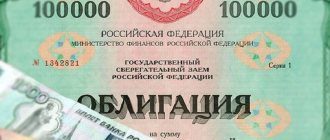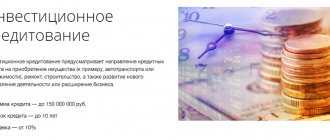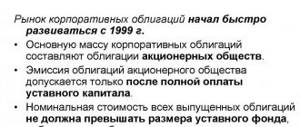Author of the article: Sudakov A.P.
The cost ratio of imported and exported products is determined by the trade balance. The parameter is an integral element of the state's balance of payments. Analysis of an economic indicator allows us to judge its deficit or surplus status. It is determined through the balance of the indicator.
Trade balance
Balance of payments, its essence and concept
The balance of payment type in the country should be compiled in order to carry out accounting based on the results of the foreign economy and foreign trade.
Note 1
This balance is an important source of information, allows us to determine how effective the state is in the system of labor division in the world, and is the basis for making decisions for the formation of foreign economic policy.
A balance of payment type can be formed as a statistical document, which systematizes the totality of the country’s external economic transactions with other states. Using balances of payments, the ratio of payments from abroad, as well as payments of the country outside the border, is characterized. With the help of external trade transactions that can reflect the flow of currency into the country, transactions with a plus sign are recorded, and expenses and payments outside the border are entered into the balances of payments with a minus sign. An influx of currency from abroad can occur in the following situations:
- Receive revenue from export goods;
- Receive income from companies that operate abroad;
- Availability of interest and dividends from international securities that belong to state legal entities;
- One-way transfers, or transfers. We are talking about the transfer of civil pensions that arrived from abroad. Here you can also transfer money to relatives and provide support;
- Possible loans provided by foreign countries and companies;
- Finance received from the sale of foreign lands, companies, real estate;
- Proceeds received from the sale of securities abroad.
The outflow of currency from the country can take place as the import of products and various services, including money transfers abroad, loans from foreign countries, and so on.
Is it difficult to figure it out on your own?
Try asking your teachers for help
Budget deficit
Any budget (from the level of a retail store to an entire country), in its ideal form, must be balanced. Balance, in this case, presupposes the equality of the amounts of funds received and funds spent. In the case when budget receipts in the form of income prevail over expenditures from it, we are talking about a budget surplus, but when budget revenues are not enough to carry out all the necessary current expenses and to balance the balance we have to resort to various types of borrowing, we are talking about about the budget deficit.
Both budget deficit and surplus are unfavorable phenomena for the country’s economy, as is any imbalance not only in the economic system, but also in any other (for example, mechanical) system. If measures are not taken in time (not balanced), it ultimately leads to a total preponderance of one of the factors and, as a consequence of this, to the search for a new equilibrium point, during which the old system, as a rule, is destroyed.
As for the economy of the entire country, it is, of course, unlikely to collapse from this kind of imbalance. Moreover, some economically developed countries have a constant budget deficit, which in no way affects their welfare. Take, for example, the United States of America, as of 2021, the budget deficit of this country was $655 billion (this is more than any other country in the world).
Causes and remedies
However, in general, such an imbalance has a negative impact on the economy, and therefore the Central Banks of countries, in the event of a budget deficit, resort to a number of measures aimed at eliminating it (or at least reducing it). These measures include:
- Establishment of upper spending limits for each specific budgetary institution of the country. This kind of limitation is carried out in relation to each item of their expenses;
- Policy for the distribution of budgets in accordance with the size of the spending powers of institutions;
- Identification of new sources of income to the budget based on an analysis of the work of budgetary institutions;
- Directing budget funds to those areas of activity that have the potential to bring good income in the future;
- Measures to save budgetary funds, involving the abandonment of part of non-essential expenses, in such a way that this does not negatively affect the population of the country;
- Borrowing funds to fund the budget in financial markets through the issuance of debt securities.
To combat the budget deficit, it is necessary, first of all, to study and, if possible, eliminate (or minimize) the reasons for its occurrence. And these include:
- High level of corruption in the field of public procurement and the resulting inefficiency in the distribution of the state budget. Government orders are distributed not from the point of view of optimality and greatest benefit for the state, but from the point of view of the benefit of an individual official (for the corresponding “kickback”);
- Insufficiently effective tax policy, leading to massive tax evasion and the development of the shadow economy;
- Economic crisis leading to a reduction in state budget revenues;
- Large budget expenditures in connection with the restructuring of the economy and the development of the country's industry;
- Various types of natural emergencies (natural disasters, major man-made disasters, mass unrest, local and global military conflicts);
- Ineffective state budget management system, leading, among other things, to an increase in unpaid public debt.
As you can see, some of these reasons are, as they say, valid and caused by the truly pressing needs of the country (expenses for economic restructuring and industrial development). Some of the reasons may be caused by force majeure (economic crisis, wars and natural disasters). And there are also reasons that we need to strive to eradicate in every possible way (corruption, ineffective tax policy), and the lion’s share of all efforts related to reducing the budget deficit should be aimed at combating them.
Sources of funds to cover the budget deficit
To cover this kind of deficit, there are three main sources of funds:
- Issue of money;
- Increase in taxes in the country;
- Various types of borrowing.
Issuing an additional amount of money necessary to cover the emerging budget deficit is the most unpopular and dangerous way to replenish it. Its danger lies in the fact that turning on the money printing press will inevitably lead to an increase in the level of inflation, which in these circumstances may well develop into hyperinflation. And in this case, all efforts to cover the budget deficit will simply come to naught. That is why the legislation of many countries (including our country) prohibits the use of such a source of financing the budget deficit.
Increasing the tax burden (by increasing rates on existing ones and introducing new taxes) in the short term can become a source of financing the deficit. However, in the future, such measures will inevitably lead to such negative consequences as:
- Growing discontent among the country's population;
- Decline in business activity in the economy;
- The growth of the shadow economy in the country (an increasingly large part of business will strive to hide their true income, which will ultimately lead to a decrease in tax revenues to the budget);
Debt financing of the budget is the most acceptable form of replenishing its deficit. This can be done in the following main ways:
- Through the issuance of government debt securities;
- Due to loans from banks and various types of credit organizations;
- Due to loans from other states or international financial organizations.
Kinds
The balance happens:
- Active. Demonstrates that for the selected time interval the costs were less than the accumulated funds.
- Passive. It indicates that the company has debt, since expenses exceeded income.
- Zero. They talk about it when during the billing period the debit and credit turned out to be the same.
- Initial. The amount that is in the account at the beginning of the billing period.
- Final. The amount remaining at the end of the billing period.
- Credit balance. By the end of the billing period, costs exceeded revenues.
- Debit balance. At the end of the period selected for calculation, income exceeds costs.
Current account balance
The current account balance can be called the most informative, since it includes absolutely all asset flows, including official and private, which are associated with the movement of all kinds of services and goods. A positive current account balance indicates that the country's credit has higher rates than the debit for the movement of services and goods, and also demonstrates the volume of obligations of non-residents relative to residents.
In other words, if there is a positive balance, this indicates that the country is a net investor relative to other countries. At the same time, if there is a current account deficit, this indicates that this state is becoming a net debtor over time and must pay for additional net imports of products.
What is the trade balance?
The definition of the concept in question is quite simple:
- the difference between profits and costs in trade relations between countries is the balance.
In fact, the balance of trade is the net profit of the government. When determining the size of the required indicator, well-known components of foreign trade are taken into account, such as:
- export – products and services delivered outside the country for the purpose of making a profit;
- Imports are goods and services purchased from outside, the production of which is not available within the country.
The dry balance after closing all purchase and sale transactions, expressed in monetary terms, is determined by the term trade balance.
Economists consider the information contained in the trade indicator being studied to be important. Behind the statistics and dry numbers hides many processes taking place within the state and beyond its borders. Based on the value of the balance, one can judge the state of production, the level of income of the population, interest on the part of foreign partners, etc. In addition, by tracking the trade balance in a given period, economists have the opportunity to plan costs and profits.
According to his estimates, by the beginning of the 1980s, as a result of growing imports of energy sources into the United States, the trade deficit in fuel could reach 20-30 billion dollars, compared to 3 billion at present.
Apparently, most of the imported oil will come from the countries of the Near and Middle East. This is justified by the fact that currently 85% of proven oil reserves in industrially developed capitalist and developing countries are accounted for by 11 OPEC member countries, with most of them belonging to Arab countries. These countries account for 90% of world oil exports. Particularly important are Saudi Arabia and Iran, whose huge potential oil reserves allow for significant increases in production. [p.192] The concept of current account balance. Historically, the most developed form of international exchange is foreign trade. Calculations for foreign trade constituted the main content of the main items of the first balance of payments. With the deepening of the international division of labor, services began to play an increasingly important role in international exchange. In the modern balance of payments, trade and services transactions occupy an important place among the main items. The balance of trade and balance of services are closely related to the state of the country's domestic economy and its position in the world economy. A foreign trade deficit or asset reflects the competitiveness of a given country's goods on world markets, the weakness or strength of its economy, and can trigger serious economic measures. More broadly, the economic relations of a given country with the outside world are reflected by the current account balance of the balance of payments. A country may, for example, cover its trade deficit with revenue from the sale of licenses, tourism, or remittances of foreign workers. The current account balance is often used to characterize the foreign economic situation of a country. The current account balance is considered to reflect the amount of real wealth that a country has transferred to or received from foreign countries in addition to its gross domestic product. It shows in technical and economic terms whether the country lives according to its income. [p.140]
SIGNIFICANT TRADE DEFICIT IN THE LATE 1380S - EARLY 1390S [p.745]
If the central banks of foreign countries allowed the domestic money supply to increase due to the purchase of dollars, then inflation from the United States would be transferred to other countries. If this adjustment mechanism (increasing the money supply with a surplus in the balance of payments and reducing the money supply in countries with a balance of payments deficit) were activated, then the US trade deficit would become smaller, since inflation rates in other countries would match the US. But to do this, other countries would have to allow the Fed to set their monetary policy. None of the countries would have an independent monetary policy; the inflation rate of any country would be determined by the inflation rate in the United States. [p.783]
Some central banks, especially in Germany, France and Japan, did not allow money supply growth to increase. Instead, they sterilized the effects of buying dollars on the foreign exchange market by selling bonds on the open market. Inflation was not imported into these countries, and US trade deficits with these countries continued to occur. [p.783]
Trade deficit - good or bad
A common argument is that a high trade deficit reduces the number of jobs in the United States. However, this argument is questionable. Money flows between nations hide the fact that, in general, Americans must sooner or later pay for their imports by reducing their exports. Even if the United States could suspend all foreign trade activities at the moment, it would eliminate the country's long-term export industry, costing jobs that could have been generated in the short term. [p.788]
If it seems difficult to blame the high trade deficit and growing US foreign debt on the private sector, the culprit therefore lies with the government. Many economists believe that this is the name
Not all economists agree that the government is to blame for creating this situation. In fact, some economists believe that the trade deficit is not actually as large as official statistics indicate. On the one hand, data on US exports to other countries are underestimated, since 1) exporters have an incentive to understate sales volumes in order to reduce
Figure 28-2 shows the US trade deficit at the beginning of 1992. As Table shows. 28-4, the US trade deficit with individual countries as a whole widened, while its trade surplus with other countries fell. For example, the trade deficit with Japan grew from $3.5 billion at the beginning of 1991 to more than $3.8 billion at the beginning of 1992. At the same time, the trade surplus with Western European countries decreased by $0.5 billion, and the trade deficit with Canada decreased only slightly. [p.789]
Many researchers focus on changes in the US trade deficit (excluding services provided). Recently, however, the US has become increasingly service-oriented. Could the trade deficit then be a misleading indicator of foreign trade With IJA Explain your point of view. [p.797]
Trade deficit. Trade balance (line of the balance of payments of the Russian Federation). Before 1994, this indicator of the trade balance deficit corresponded to [p.301]
In modern conditions, the relationship between two factors in the formation of interest rates, market forces and government regulation, is of great theoretical and practical importance for participants in credit operations. The goals of interest rate regulation are, first of all, the priority development of individual sectors of the economy. Thus, preferential terms for lending to export industries, along with tax incentives, make it possible in a number of countries to compensate for the lag of national companies from their foreign competitors in the foreign market and thereby reduce the trade deficit. Another goal of interest rate regulation is to create relatively uniform conditions for participants in the national credit system. [p.393]
From the First World War until the 1970s. Capital flight from the United States exceeded capital inflow. However, trade deficits and federal budget deficits in the 1980s. reversed this situation. [p.80]
The end of the Cold War forced the United States and Russia to urgently seek new sources of funding for science and technology, previously fed primarily through the defense industry. The growing trade deficit and the menacing decline in both countries' global market shares have led to a search for ways to leverage previous government investment in the defense research and development sector, particularly to increase the competitiveness of American industry. Russia faces far more severe financial difficulties than the United States, with the near-total loss of government subsidies threatening the very existence of most Russian research institutions. [p.206]
The United States seems to have the right to endless borrowing and the right to build an endless pyramid of debt. It is no coincidence that their trade deficit (that is, the excess of imports over exports, the cost of imported goods over exported ones), even with extremely unequal prices and with an exceptionally high dollar exchange rate, is [p.276]
The US trade deficit with Japan and Europe is about 0.45 billion per day, with other countries - 0.95 billion per day. Thus, from their equivalent (in terms of labor cost) imports, they do not pay at all 0.95 20 + 0.45 = 19.5 billion dollars per day. In other words, they consume more for free than they produce themselves. [p.278]
If exports predominate in the structure of a country’s foreign trade, then this means an excess supply of foreign currency to the country, therefore, an increase in demand for the national currency and an increase in the exchange rate of this currency. And vice versa, with a trade deficit (when the volume of imports is greater than the volume of exports) the national currency must weaken. In reality, as we will see later, the mutual influence of trade, exchange rates, inflation and interest rates mixes all factors so much that the connection between them becomes completely unobvious. [p.24]
Based on estimates, it is assumed that the gains from free agricultural trade, undistorted by programs and subsidies, for industrialized countries alone will be about $35 billion. per year, with the US, EU countries and Japan benefiting the most. Collateral benefits include 1) an increase in American agricultural exports, which would reduce the country's international trade deficit, and 2) a reduction in spending on domestic agricultural programs, which would help reduce the federal budget deficit. Thus, the United States has strong economic reasons for promoting the liberalization of international agricultural trade. [p.739]
In Chapter 37, we looked at comparative advantage as the main economic basis of world trade and discussed the impact of barriers to free trade. In this chapter, firstly, we want to introduce the reader in detail to the monetary, or financial, aspects of international trade, with how the currencies of different countries are exchanged during export-import transactions. Secondly, we will try to analyze and explain what a country's balance of payments is. What is meant by, for example, a favorable and unfavorable balance of trade? What is the meaning of a negative and positive balance of payments? Third, we will analyze the different types of currency exchange rate systems that have been used by trading countries and evaluate them. To achieve this goal, we will first look at freely floating and fixed exchange rates, and then get acquainted with the systems that have been encountered in historical practice. Finally, we'll look at the trade deficit that the United States has faced in recent years. [p.838]
Under flexible exchange rates, the US trade deficit at an exchange rate of 2 dollars. for 1 f. Art. will be adjusted by increasing the exchange rate to 3 dollars. for 1 f. Art. With fixed exchange rates, the shortage of pounds ab will be compensated from foreign exchange reserves. Under the gold standard, shortages would cause changes in domestic price and income levels that would shift demand for pounds (D) to the left and supply (S) to the right, maintaining the parity rate of $2. for 1 f. Art. [p.848]
Name and explain two reasons for the decline in the international value of the dollar between 1985 and 1987. Why the US trade deficit remained significant even despite the decline in the value of the dollar
If imports exceed exports, this is a trade deficit (negative balance). [p.54]
Trade and budget deficit. The third quarter of 1987 showed the largest U.S. trade deficit since 1960, which, coupled with the nation's budget deficit, led investors to believe that these deficits would cause U.S. stocks to fall relative to foreign stocks. [p.21]
Thus, exports help stimulate economic development, while imports act as a constraint. Of additional interest is the analysis of the trade balance between individual countries. Thus, most of the US trade deficit is due to relations with Japan, while the UK's trade deficit is determined primarily by its relations with Germany. Analysis of such data makes it possible to more accurately predict changes in both the main exchange rates and cross rates. [p.57]
Analyzing a negative trade balance is more difficult because, as we said above, a negative trade balance or trade deficit, when imports dominate exports, is not always evidence of a weak economy. For example, the long-standing trade deficit of the United States and Great Britain does not prevent the currencies of these countries from strengthening. [p.74]
The second trend reflects the opposite consequences. A passive trade balance leads to a depreciation of the national currency and is complemented by a budget deficit. In the United States, for example, a large trade deficit is covered by a very large influx of foreign capital. [p.546]
On the other hand, the current average level of profitability with rising prices for industrial producers could not improve the financial position of enterprises. In general, the real profitability of enterprises has decreased. High levels of non-payments continue to be a problem. Tensions persisted in providing enterprises with their own working capital. The level of provision with them continues to fall. The share of unprofitable enterprises and organizations has increased. More than a third of enterprises were unprofitable at the beginning of 2002. The debt of enterprises and organizations in terms of income and revenues to the country's budget has increased. A high level of direct trade transactions and a trade balance deficit remained. [p.487]
A commission specially created on behalf of the US President was engaged in identifying the causes of the crisis and making recommendations for the future. She came to the conclusion that the crisis decline was triggered by an unexpectedly high US trade deficit, which caused an increase in interest rates, and the duration of the fall was explained by the reaction of portfolio investors who, following orders from clients, sold securities. [p.118]
However, the relatively modest role of non-residents in the American stock market does not make it less dependent on external factors. The American stock market depends on the influx of foreign capital. The position of the US dollar in world currency markets also depends on the influx of foreign capital into the US market. For the period from April 2001 to April 2002, the US trade deficit amounted to $423 billion, and the current account balance deficit amounted to $398 billion. This means that in order to ensure a balance between the supply and demand of the US dollar in the global foreign exchange market A little more than $1 billion of foreign capital should flow into the United States every day. A reduction in capital inflows into the United States means not only a fall in stock prices, but also a fall in the dollar exchange rate. At the same time, the depreciation of the dollar entails a weakening of the interest of foreign investors in American securities. [p.122]
Although the volume of US international trade remains at a fairly low level compared to other countries, the American public in recent years has generally become more interested in international financial transactions in general and exchange rates in particular. This is true for at least four reasons: the record US trade deficit, the instability of the dollar against foreign currencies, the intense economic integration in Quiroia, and the ongoing globalization of financial markets. Before considering in broad terms the controversial problems of international monetary and financial relations, we will highlight some of the most characteristic of them. [p.744]
Newspapers and television news reports have noted on various occasions that the United States is suffering from a huge trade deficit. These deficits reached record levels for the United States in the late 1980s and 1990s (Figure 27-1). We will analyze the trade deficit in detail in Chapter 28, here we will only note that it is the subject of considerable debate regarding 1) whether such a deficit is real or the result of an incorrect assessment 2) whether this deficit is related to the huge budget deficit of the federal government 3) justifies Whether such a trade deficit is a policy of protectionism, which is characterized by the imposition of tariffs, or taxes, on goods imported from other countries, and the establishment of import quotas, or quantitative restrictions on goods imported from other countries. [p.745]
US trade deficit. The US trade deficit grew rapidly in the mid-1980s and remained above $100 billion in the early 1990s. (Source 1991 E onomi Report of the President.) [p.745]
US trade deficit. Although the US dollar has been on a downward trend since its sharp decline in 1985, the US trade deficit has continued to rise. In 1991 and early 1992 its size was significant. (Source E onomi Indiators.) [p.790]
Trade deficit (mer handise trade deficit) is a situation in which the value of goods imported by a country exceeds the value of goods exported. [p.796]
As in previous years, the expansion of domestic consumption outpaced the growth of production. The boom in the economy increased the demand for foreign products. Imports of goods and services exceeded their exports. Hence the significant trade deficit. The negative current account balance reached 1.5% of GDP. At the same time, exports of direct investment increased sharply. British companies have been active in international mergers and acquisitions. At the same time, the UK managed to maintain one of the leading places in attracting foreign investment. However, due to the high exchange rate of the pound against the single European currency for most of the year and due to non-participation in the Eurozone, it began to lose its attractiveness for foreign business. If in 1999 Britain was in second place after the United States in terms of attractiveness, then in 2000 it was also ahead of China and Brazil. Moreover, Japanese companies Sony, Panasonic and Hitachi have announced their intention to limit production at their British plants. Tire manufacturers Goodyear and Michelin announced that they would be curtailing production. Honda has postponed the opening of a new plant in Britain. BMW has sold British car firm Rover to a group of UK private investors. [p.439]
Negative balance[edit | edit code]
A negative trade balance in countries such as the USA and Great Britain makes it possible to contain inflation and maintain a high standard of living by transferring labor-intensive production outside the state [ source not specified 1341 days
].
Such countries have capital-intensive and high-tech sectors of the economy, which attract significant amounts of capital from around the world in the form of portfolio or direct investment. However, due to the lack of competitiveness of export industries, these countries are forced to cover the bulk of the trade deficit by issuing private and government debt instruments [ source not specified 1341 days
]. In the United States, the trade deficit, according to the Bureau of Economic Analysis, amounted to $836 billion in 2006.
In underdeveloped countries, a negative trade balance indicates the uncompetitiveness of export sectors of the economy, which often leads to devaluation (depreciation) of the funds of such countries due to the fact that they cannot pay for import purchases [ source not specified 1341 days
].
A high negative balance in developed countries means a high level of import consumption with a low level of exports. In this case, import financing occurs through consumer loans, which can lead to a crisis of non-payments. Examples of such countries in the 21st century. Greece, Spain and Italy serve.
Methodology for calculating the value of a country's imports and exports of goods
The UN Statistical Commission advises countries to adhere to the same methodology regarding the basis and system for recording monetary indicators in foreign trade. In particular, when compiling the trade balance, you can take into account the value of imported goods on a CIF basis (or ex-border of the buyer’s country), and exported goods on a FOB basis (or ex-border of the seller’s country), that is, include it in the cost of imported goods the cost at the border or at the exit ports of the seller’s country and the costs of delivering and insuring the goods to the border of the buyer’s country, and the cost of the exported goods includes all the seller’s costs for delivery to the exit port of the goods or to the border of his own country, including export duties and other similar fees. When compiling the trade balance, most countries adhere to the calculation methodology recommended by the UN Statistical Commission.
Approximately 30 countries, including socialist countries, record the value of imports, as well as the value of exports, on an FOB basis. FOB is the basis of the cost of exported goods, which is taken into account in the trade balance. The trade balance of capitalist countries reflects the spontaneous nature of the development of the capitalist economy, the intensification of the struggle for markets, inflation, currency crisis and a number of other processes. The uneven political and economic development of capitalism manifests itself in changing the balance of power between competitors, in the aggravation of the trade war between countries, customs and economic groups of imperialist states. The following methods of “levelling” the trade balance have been widely used in the practice of capitalist countries, such as quantitative duties, customs restrictions on imports, credit and tax benefits, budgetary financing of exports, revaluation, devaluation, the introduction of multiple exchange rates and some others. Customs duties are used to equalize the trade balance. For most developed capitalist countries in the 1st half of the 1970s. characterized by chronic deficiency
Thus, in 1970-74, the total trade deficit of the United States amounted to 7.4 billion dollars, Great Britain - 13.2 billion pounds sterling, France - 47.3 billion francs. In all imperialist countries in 1974, except Canada and Germany, the trade balance was reduced to a significant deficit, mainly due to the increase in prices for petroleum products and oil by the oil monopolies.
The trade balance—the most commonly published—is the net value of exports of goods only (called “apparent” exports), excluding their imports.
Changes in the trade balance can be commented on in different ways: they believe that the excess of exports over imports indicates that global demand for goods of a given country is increasing. If the whole world buys the export goods of a given country and buyers in the domestic market also prefer domestic goods to imported ones, then the economy of this country is in good condition.
Conversely, a shortage indicates that a country's goods are not competitive enough, and its residents must do something to protect their own standard of living. A trade deficit indicates that a country's goods are not competitive enough. But along with this, it should be noted that this analysis is valid when the reason for the change in the trade balance is an increase or decrease in demand for goods of this country.
Russian imports from non-CIS countries in 2013
Russian exports to non-CIS countries in 2013
Russian imports from CIS countries in 2013
How it works (example):
When a country imports more than it exports, the resulting negative number is called a trade deficit. When the opposite is true, the country has a trade surplus.
For example, if the United States imported $1 trillion in goods and services last year, but exported only $750 billion in goods and services to other countries, then the United States had a trade balance of negative $250 billion, or a trade deficit of $250 billion. US dollars.
In the United States, the Bureau of Economic Analysis calculates the trade balance. The balance of trade is a component of a country's current account, which in turn is a component of the balance of payments (BOP)
Risk of foreign capital inflow
For a small country with a trade deficit, such a large degree of foreign direct investment and foreign ownership of government debt can be risky.
Many East Asian countries, including Thailand, Indonesia and Malaysia, ran large trade deficits throughout the 1990s, and foreign capital poured into the country. Not all of this investment was allocated efficiently or wisely, and when the Asian financial crisis struck in 1997 and 1998, foreign investors rushed out of the country. As a result, these East Asian countries found themselves at the mercy of global financial markets. The results were painful.
Why does this matter:
The balance of trade is used to help economists and analysts understand the strength of a country's economy relative to other countries. A country with a large trade deficit is essentially borrowing money to buy goods and services, while a country with a large trade surplus is essentially lending money to countries with deficits. In some cases, the trade balance correlates with the political stability of a country as it indicates the level of foreign investment occurring there.
The essence of the economic school of mercantilism
The trade balance of socialist countries reflects the proportional and systematic development of the economy and, above all, foreign trade, the deepening of the socialist international division of labor, and the development of the socialist world market. The trade balance of socialist countries, as a rule, is active, although in some countries and in some years they were in deficit. For example, during the years of the 1st Five-Year Plan (1929-32).
The trade balance of the USSR was passive, which was associated with the need for widespread imports of machinery and equipment in order to create a powerful industrial base of the country. In the USSR in subsequent years, a stable excess of the value of exports over the value of imports was ensured. Trade relations between socialist countries are built on the basis of mutual benefit and equality, improved cooperation and deepening the development of economic socialist integration. This ensures a balanced foreign trade turnover between them, which corresponds to the development tasks of the national economy of each country and the entire socialist community.
In a closed economic system, savings must correspond to investment; in an open economy, these two indicators may differ depending on the state of the current account. The excess of imports over exports implies that investment is greater than saving by the amount of the deficit, which cannot be without an influx of long-term foreign capital to finance this deficit. However, there is a danger of maintaining the current account deficit due to continuous capital inflows for such reasons.
Firstly , with the high liquidity of the instruments that serve this influx of capital, the country’s economy is highly dependent on the state of global monetary and financial markets, which are subject to strong speculative price fluctuations.
Secondly , when the financing of the current account deficit is financed by IMF loans, the country's government's freedom of action in the field of economic policy may also be significantly limited by the implementation of the Fund's instructions that determine the receipt of the loan. The influx of foreign capital finances the trade deficit.
Why does a Forex trader need a trade balance?
The trade balance indicator is one of the few indicators that can have not an indirect, but a direct, direct impact on fluctuations in the exchange rate of the national currency. This is explained as follows: the trade balance reflects the constant movement of financial resources between partner countries associated with the provision of certain goods and services according to the agreement.
It is worth noting the existence of one paradox, which is that the reaction of the national currency exchange rate to the trade balance report is minimal, and all due to structural and technical reasons. That is, the report is characterized by some delay. The reason for this is the time required for its preparation and execution. Therefore, exchange rate dynamics very rarely reflect the true flow of values and material resources between trading partners.
Useful articles on the topic
- What is the IMF?
- What is the WTO?
- Fundamental analysis of Forex: features of currencies that deserve attention
- Economic calendar and features of trading on fundamental analysis on Forex
Fortrader Suite 11, Second Floor, Sound & Vision House, Francis Rachel Str. Victoria Victoria, Mahe, Seychelles +7 10 248 2640568
Trade deficit and employment
Economists also disagree about the broad impact of trade deficits on employment. Some argue that imports necessarily reduce employment at home, while others point to offsetting job growth in other sectors through the same trade linkages.
Often, job losses are limited to certain sectors. A study by the Economic Policy Institute found that the surge in Chinese imports cost the U.S. 3.4 million jobs between 2001 and 2015, and about 75% of those jobs were in manufacturing. This partly explains why US policymakers often focus on bilateral trade deficits with China.
Foreign trade balance of Russia
Russia has maintained a trade surplus for the past 10 years, but exports fell significantly in 2009 due to the economic crisis. Russia has since recovered, with the country reporting larger surpluses than before the crisis.
Russia's economy has weakened recently due to lower world oil and gas prices, as well as international tensions resulting from the invasion of Ukraine. Nevertheless, Russia has a positive trade balance.
Recommendations
The UN Statistical Commission recommends that all countries use a single technology in relation to the system itself, as well as the basis for recording price indicators in their own foreign trade. In particular, when forming a trade balance, it is necessary to take into account the price of all imported goods, based on an FOB basis, that is, the price of an imported product includes its price at the border or at various exit ports of the selling country, as well as all kinds of costs associated with insurance or delivery of products to the border of the consumer country. In this case, the price of the exported goods bears all the seller’s expenses associated with the delivery of the goods to the output port or to its own border, including all kinds of duties and other similar fees.
The economy directly depends on what the trade balance will be. In this regard, in the vast majority of cases, when compiling a trade balance, countries fully comply with the technology recommended by the UN Statistical Commission. Approximately 30 countries record import and export prices based on FOB.
Theoretical explanation
There are several concepts that explain the desire of states to enter the international market for goods and services. This issue was studied by such famous scientists as Adam Smith and David Ricardo. Historically, the first theory that tried to explain the importance of a trade surplus was marcantilism. They believed that exports should always exceed imports. Mercantilists welcomed protectionist measures. Gold and other luxury goods were generally not subject to export beyond national borders. Smith and Ricardo no longer viewed trading as a zero-sum game. They developed the theory of absolute and comparative advantage. Among others, the concepts that explain international trade include the work of Haeckscher and Ohlin, Lenotiev, Vernon, Porter, Stolper and Samuelson.
How important is it?
In the process of development of the economic school of mercantilists, equilibrium was established in accordance with the terms of the balance on the current account, while this balance did not take into account capital movements, as well as all kinds of changes that occurred in the gold and foreign exchange reserves of a particular country. Thus, the main objective of economic policy in this case was to maximize the current account surplus in order to ensure the accumulation of gold in the country. Today, it is already obvious that such a statement is not without foundation, because it is the state of the active account that has a direct impact on the real income of the state, as well as the standard of living of the people living in it.
Thus, in the process of integrating the asset account into the current system of national accounts, it can be determined that the occurrence of a deficit in this account indicates that the country’s expenses significantly exceed its income, which cannot be financed in any other way except through an influx of foreign borrowed capital for a long term.
Budget surplus
When the amount of income to the country's budget, based on the results of a certain period of time, exceeds the amount of expenses from it, they speak of a positive balance or budget surplus. At the same time, depending on whether the country’s debt obligations (both internal and external) are taken into account or not, we can talk about a primary (without taking into account debt) and secondary (including debt) budget surplus.
The emergence of a surplus is typical for the budgets of countries exporting raw materials. This allows you to invest surplus funds in production, scientific research, the social sphere, etc. That is, on the one hand, it represents an undoubted benefit for the country. However, on the other hand, according to many experts, the emergence of a budget surplus may be nothing more than a consequence of tough policies in the country’s economy and lead to such consequences as:
- Lack of free working capital;
- Decrease in liquidity of credit institutions.
Based on this, it is suggested that in certain cases, a certain controlled budget deficit will be useful for the country's economy.
The budget surplus, in itself, is an uninformative value and in order to give it a certain meaning, it is necessary to correlate it with some other important macroeconomic indicator. Therefore, the most obvious way is to express the surplus as a percentage of the country's GDP.
This table shows revenue, expenditure and budget surplus data for most countries in the world:
What causes a surplus?
Considering the situation using the example of the Russian Federation, a surplus may arise for the following reasons:
- Increase in customs duties;
- Rising prices for hydrocarbons. The Russian economy is highly dependent on the cost of gas and oil. Export of this raw material is almost half of state budget revenues. In the process of budget formation, the current price of hydrocarbons is used as a basis. If it increases rapidly, this indicates an increase in the revenue side of the budget, which will provoke the emergence of a surplus;
- Increase in taxes for legal entities and individuals;
- Suspension of funding for social and other projects.










